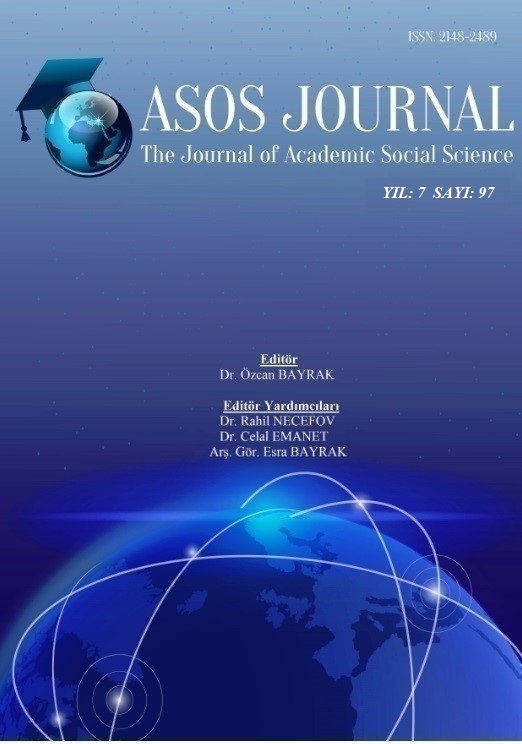Author :
Abstract
Osmanlı Devleti’nde asırlardan bu yana sanat ve sanatçılar, padişahlar ve saray erkânı tarafından değer görmüştür. Tıpkı hat, şiir, minyatür ve benzeri Türk İslam Sanatları’nda olduğu gibi Türk Müziği de 19. yüzyılın sonuna kadar sarayda ve mevlevîhânelerde hatırı sayılır bir şekilde ilgi ve takdir görmeye devam etmiştir. Dönemin Türk Müziği bestekârları da hünerlerini göstermek için genel olarak büyük formlarda eserler bestelemeyi tercih etmiştirler. Bu formların en büyüğü ise “Mevlevî Âyini” formudur. En eski Mevlevî âyinleri olan Beste-i Kadîm’den günümüze kadar bütün Mevlevî âyinlerinde yüksek sanatın ve estetiğin en ince ayrıntılarını görmek mümkündür. Bu makalede Beste-i Kadîm’den Nâyî Osman Dede dönemine kadar bestelenmiş olan Mevlevî âyinleri form açısından incelenmiştir.
Keywords
Abstract
For many centuries, art and artists have been appreciated by sultans and their staffs in Ottoman Empire. Such as calligraphy, poetry, miniature and similar Turkish Islamic Arts, Turkish Music continued to receive considerable attention and appreciation in the palace and Mevlevi lodges until the end of the 19th century. So the Turkish Music composers of the period generally preferred to compose works in large forms in order to show their skills. The greatest one is “Mevlevi Ritual” of these forms. It is possible to see the finest details of high art and aesthetics in all Mevlevi rituals from Beste-i Kadim which is the oldest Mevlevi ritual to the present day. In this article, Mevlevi rituals which were composed from Beste-i Kadim to Nayi Osman Dede period were analyzed in terms of form.
Keywords
- Akdoğu, Onur, (1996), Türk Müziği’nde Türler ve Biçimler, Ege Üniversitesi Basım Evi, İzmir.
- Çevikoğlu, Timuçin, (2007), “Semâ Töreni ve Mevlevî Âyinleri”, (Yayın Danışmanları: Prof. Dr. İlber Ortaylı, Bayram Bilge Tokel), Anadolu’da İslâm Kültür ve Medeniyeti, Diyanet İşleri Başkanlığı Yayınları, Yayın No: 682, s. 292-310, Ankara.
- Eroğlu, Türker, (2017), “Türk Halk Müziğinin Türkiye’deki Cografî Bölgelere Göre Temel Özellikleri Bakımından İncelenmesi”, Asos Journal, Y. 5, S. 41, s. 513-527.
- Hatipoğlu, Emrah, (2011), Mevlevî Âyînleri Makamlar ve Geçkiler, Kültür ve Turizm Bakanlı- ğı, İstanbul.
- Özalp, Nazmi, (1992), Türk Musikisi Beste Formları, TRT Yayınları, Ankara.
- Özcan, Nuri, (2004), “Mevlevî Âyini”, TDV İslam Ansiklopedisi, C. 29, s. 464-466, Ankara.
- Tura, Yalçın, (2006), Tedkik ü Tahkik Nasır Abdülbaki Dede, Pan Yayıncılık, İstanbul.





